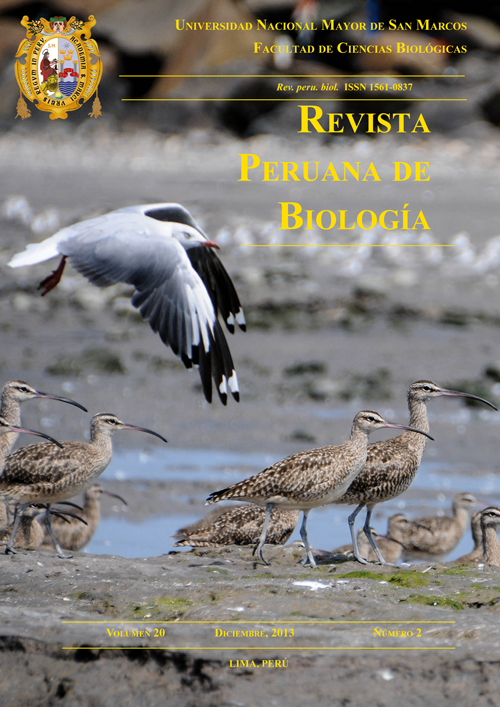Biodegradation of the explosive pentaerythritol tetranitrate (PETN) by bacteria isolated from mining environments
DOI:
https://doi.org/10.15381/rpb.v20i2.2678Keywords:
pentaerythritol tetranitrate, contamination, mining, biodegradation, Bacillus, Enterobacter.Abstract
Pentaerythritol tetranitrate (PETN) is the most energetic and recalcitrant detonating used in mining activity being that it has four nitro groups linked by ester bounds, also is considered a persistent organic pollutant in agreement with the Stockholm Convention. In this work the degradation efficiency of PETN by bacteria isolated from mining environments is evaluated. At first, strains that showed growth during three subcultures with PETN as unique source of nitrogen were selected. Before, we identified Bacillus sp. J8A2 and Enterobacter sp. M1B by the 16S rRNA gene partial sequences analysis. Specific growth rate were 0.057 h-1 for J8A2 and 0.042 h-1 for M1B, and specific rate of PETN degradation were 0.72 and 1.16 mmol of PETN/g of protein.h respectively. Moreover, crude extract of J8A2 strain showed a specific activity (U) of 1.03 mmol of PETN/h and a specific activity per protein (U/g) of 138.6 mmol of PETN/g.h.Downloads
Downloads
Published
Issue
Section
License
Copyright (c) 2013 Yerson Durán, Christian Andrade, Armando Martínez, Tito Sánchez, Fernando De la Cruz, Pablo Ramírez

This work is licensed under a Creative Commons Attribution-NonCommercial-ShareAlike 4.0 International License.
AUTHORS RETAIN THEIR RIGHTS:
a. Authors retain their trade mark rights and patent, and also on any process or procedure described in the article.
b. Authors retain their right to share, copy, distribute, perform and publicly communicate their article (eg, to place their article in an institutional repository or publish it in a book), with an acknowledgment of its initial publication in the Revista Peruana de Biologia.
c. Authors retain theirs right to make a subsequent publication of their work, to use the article or any part thereof (eg a compilation of his papers, lecture notes, thesis, or a book), always indicating its initial publication in the Revista Peruana de Biologia (the originator of the work, journal, volume, number and date).






